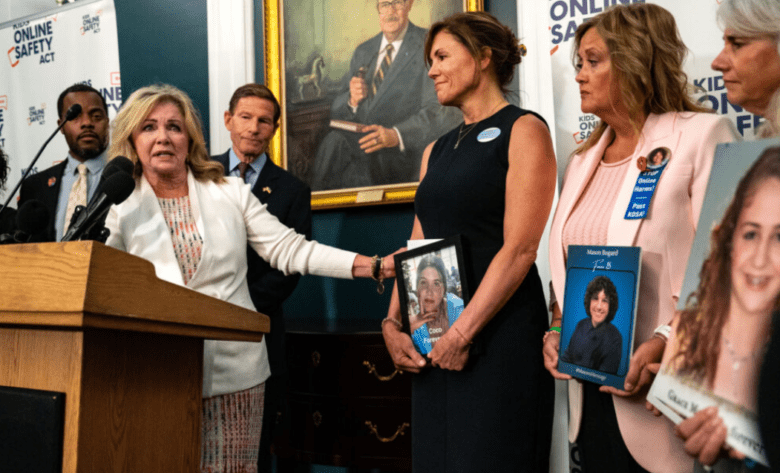Safety Act and Its Chances: What to Know About the Kids Online Safety Act and Its Chances of Passing
In today’s rapidly evolving digital landscape, children are more exposed to online risks than ever. To address this, the Kids Online Safety Act (KOSA) was introduced to regulate tech companies and protect minors from harmful content. With wide support but also significant opposition, many are questioning the chances of passing this bill aiming to protect kids. This article will explore 7 essential insights you need to know about KOSA, its key provisions, and the legislation’s potential impact.
What You Need to Know About the Kids Online Safety Act
The Kids Online Safety Act was introduced to address the growing concern over how children interact with gaming sites and other online platforms. It acknowledges that children are not only vulnerable to dangerous online content but also to addictive behaviors encouraged by social media and other platforms.
This bill aiming to protect kids requires tech companies to take on a legal term that requires companies to take reasonable steps to prevent harm to minors. These steps include:
- Protecting children from content promoting violence, self-harm, and substance abuse.
- Creating parental controls that allow parents to monitor and limit children’s online activity.
- Enforcing the use of default safety settings for minors.
This legislation specifically targets online platforms like social media networks, streaming services, and other websites that engage with children under the age of 18.

Who Supports KOSA and Why It’s Likely to Pass
The proponents of the Kids Online Safety Act include organizations as well as companies that understand the urgent need for change. Well as companies like Microsoft, and major advocacy groups such as Common Sense Media and Fairplay have rallied behind the bill. They see it as the necessary first step in regulating how tech companies operate about children’s safety.
The chances of passing KOSA are higher than many would expect, as it has bipartisan support with over 60 cosponsors in the Senate. However, the legislation has faced delays due to objections that the bill could impact free speech rights.
Here are three reasons KOSA might pass:
- Bipartisan Momentum: Both Democrats and Republicans agree that more regulations are needed to protect children online.
- Tech Company Cooperation: Some companies like Microsoft have expressed their support, acknowledging the growing public demand for safer digital spaces for children.
- Public Pressure: Parents are increasingly worried about the rise of mental health issues and online predators, fueling the push for stricter regulations.
Key Provisions That Set the Kids Online Safety Act Apart
KOSA introduces several key provisions that set it apart from previous regulations. For example, it mandates that online platforms appear to follow a clear duty of care when engaging with children. These platforms would need to implement measures that:
- Limit harmful content related to cyberbullying, violence, and explicit materials.
- Disable features that encourage addictive behavior such as autoplay and infinite scrolling.
- Provide minors with clear options to manage their privacy and personal data.
The bill also requires platforms to implement technology that limits communication with children, reducing the risk of strangers contacting minors. Failure to comply would result in penalties, overseen by the Federal Trade Commission (FTC).

Opposition to KOSA and Concerns Raised
While there is widespread support for KOSA, it has also garnered strong opposition. Civil liberties groups, including the American Civil Liberties Union (ACLU), argue that KOSA could violate the First Amendment. They fear it could limit access to important information for vulnerable groups, such as minors seeking access information on LGBTQ issues or reproductive rights.
Critics of the bill argue that regulating tech companies and requiring them to moderate content may lead to censorship. They warn that politically motivated actors could use the law to limit topics they find objectionable. For example:
- Pro-LGBTQ content: Information on gender identity or sexual orientation could be suppressed under the guise of protecting minors.
- Reproductive rights information: Information related to contraception or abortion could also face restrictions.
Another concern is the impact on young people’s experience online. Critics argue that limiting minors’ access to online resources might hurt their ability to find safe spaces for self-expression or support groups.
How KOSA Will Be Enforced
If passed, KOSA would be enforced primarily by the Federal Trade Commission (FTC), which would oversee the implementation of the bill’s provisions. The FTC would ensure that online platforms take responsibility for the content they host and make sure they’re meeting their obligation to protect children from dangerous online content.
Additionally, state attorneys general can still enforce other provisions of the bill. However, their ability to enforce the act has been limited to avoid potential overreach into areas where state-level censorship could occur, particularly around sensitive political or social topics.
KOSA’s enforcement provisions include:
- Penalties for non-compliance: Tech companies that fail to meet safety standards could face substantial fines.
- Regular audits: Platforms will be subject to ongoing audits to ensure they remain compliant with the safety standards set out in the law.
- Parental reporting: Parents would have more tools to report violations and request investigations if platforms fail to comply with safety regulations.
What Happens if KOSA Passes? The Impact on Tech Companies and Users
If KOSA passes, it will have a significant impact on online platforms. Tech companies will be required to adopt more stringent safety measures and change the way they interact with minors. This may include the removal or alteration of certain features that have been deemed addictive or harmful, such as autoplay videos and algorithm based content suggestions.
In particular, online platforms would need to:
- Limit addictive features: Disable or restrict features like infinite scrolling, autoplay, and pop-up notifications for users under 18.
- Increase transparency: Platforms will need to disclose how their algorithms work and how they target children.
- Strengthen parental controls: Companies will have to introduce easy to use parental control systems to allow parents to monitor and restrict their children’s activity on their platform.
The burden of regulating tech companies will also come with increased costs. Platforms may need to invest heavily in content moderation, safety tools, and ensuring compliance with KOSA’s regulations.
The Future of Online Child Safety: Beyond KOSA
While KOSA offers an important legislative step, it’s just the beginning. Parents and educators need to stay proactive in educating children about online safety and monitoring their engagement with gaming sites and other online platforms.
Additionally, organizations as well as companies will need to work together to create a safer digital landscape for children. This means developing industry standards that go beyond legislation and empowering users to take responsibility for the harm that unregulated content can cause.
In the future, we may see:
- More comprehensive laws: Following KOSA’s implementation, other nations might adopt similar regulations or create their legislation.
- Tech companies taking a more active role: In anticipation of further regulations, companies may start implementing more child-friendly features before being mandated by law.
Conclusion
The Kids Online Safety Act is a pivotal step in addressing online dangers faced by minors today. With strong bipartisan support and clear goals for improving online safety, the bill has significant chances of passing in the coming year. However, the ongoing debate about potential censorship and the bill’s ability to truly protect children from dangerous online content will shape its final form.
Regardless of its outcome, KOSA has sparked an important conversation about how we can better ensure the safety of children online in a world where technology and online platforms dominate their everyday lives.
FAQ Section
Q1: What should parents know about kids online safety?
Parents should be aware of the various risks their children face when interacting with online platforms. Dangerous online content such as cyberbullying, explicit material, and harmful content can negatively impact young minds. KOSA is a significant step in regulating tech companies, requiring them to protect children by enforcing stricter safety measures and offering parental control options.
Q2: How do online platforms take responsibility for harmful online content?
Tech companies are expected to take responsibility for the online content that children are exposed to. KOSA mandates that platforms actively work to prevent exposure to harmful content that is dangerous to minors. This includes addressing issues that young people experience online, such as addictive features and inappropriate messaging.
Q3: How will KOSA impact the online experience for young people?
The Kids Online Safety Act aims to significantly improve the experience online and on social media platforms by limiting harmful to kids content. It introduces measures that will require tech companies to disable certain features and adopt safety settings that prioritize protecting children online.



